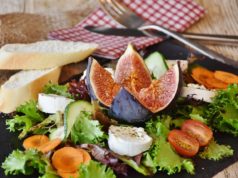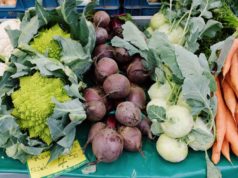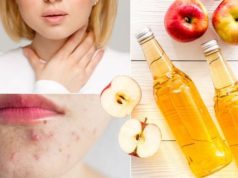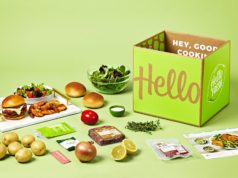High blood pressure can be a big risk factor for heart attacks and strokes but as it doesn’t have obvious symptoms, many of us don’t know whether we have it.
For years we’ve been told that sodium is the culprit for raising blood pressure but this is often only part of the story. Blood pressure can also be affected by minerals such as potassium, magnesium and calcium and that having low levels of these can have an impact on both general health and blood pressure.
What you eat can therefore have a big effect on your blood pressure but here’s the good news: some foods are proven to help to keep your blood pressure in check and this will often still be the case even if yours is already on the high side.
Here are 10 foods to stock up on for naturally lower blood pressure!
Flaxseed
These tiny seeds pack some serious punch when it comes to your blood pressure.
In a study that included some patients with hypertension who were taking medications to control their blood pressure, upping their dietary intake of flaxseed led to a reduction in blood pressure. The participants who already had relatively high blood pressure saw quite significant decreases in their blood pressure.
The results were so impressive that the lead author on the study described it as “the largest decrease in BP ever shown by any dietary intervention.”
Flaxseed is being added to any increasingly large range of foods such as crackers, breads and even cakes. Alternatively, you can buy flaxseed and grind it up to use in your own baking or add it to smoothies.
Why it helps: A 3 tbsp serving of flaxseed contains 30 per cent of your recommended daily allowance of magnesium, and flaxseed also contains potassium. As both of these minerals are key for healthy blood pressure, this may go some way towards explaining why flaxseed has performed so well in studies.
Raisins
Snacking on a handful of raisins several times per day has been shown to reduce blood pressure in people who have prehypertension (blood pressure that is on the high side but not yet considered to be “too” high).
Compared to other snacks, raisins significantly decreased systolic blood pressure at weeks 4, 8 and 12 during the study while diastolic blood pressure was reduced throughout the study period. More studies will be needed to confirm whether raisins can have a big role to play in helping patients with prehypertension to reduce the risk of developing hypertension but this study has suggested great potential.
Why they help: Raisins are high in potassium and also contain fiber, which may help to make the arteries less stiff.
Watermelon
 Watermelon is another food that can tackle prehypertension. Research has shown that it can reduce blood pressure, with one study looking at its effect on middle aged participants who had high blood pressure prior to the experiment. All of the participants found that their blood pressure decreased during the study period.
Watermelon is another food that can tackle prehypertension. Research has shown that it can reduce blood pressure, with one study looking at its effect on middle aged participants who had high blood pressure prior to the experiment. All of the participants found that their blood pressure decreased during the study period.
Why it helps: Watermelon is high in L-citrulline, an amino acid that is known to regulate blood pressure.
Blueberries
Eating one cup of blueberries per day can help to reduce blood pressure and stiffness in the arteries, both of which are big risk factors for cardiovascular disease.
In one study, 48 postmenopausal women with prehypertension or stage 1 hypertension were split into two random groups and given either the equivalent of a cup of fresh blueberries or a placebo powder.
After 8 weeks, the blueberry group saw an average decrease of 5.1 per cent in systolic blood pressure and a 6.3 per cent average reduction in diastolic blood pressure. Their arterial stiffness also reduced by an average of 6.5 per cent and there was a significant increase in nitric oxide, which is strongly linked to wider blood vessels. Both of these are closely connected to blood pressure.
This was one of the first studies to show the effects of just one cup of blueberries on blood pressure whereas previous studies have been based on much larger amounts that people would realistically struggle to consume in the average day. Its results have encouraged researchers to hope that blueberries can potentially stop prehypertension from developing into full blown hypertension.
How they help: Blueberries are naturally low in sodium and also contain potassium, magnesium and calcium for healthier blood pressure.
Bananas
One study suggested that eating two bananas per day can help to keep blood pressure in check. Doing this for a week led to a 10 per cent reduction in blood pressure for participants.
How they help: Bananas are high in potassium, with one banana counting for around 10 per cent of your recommended daily allowance. You’ll also get a decent helping of your magnesium intake.
Avocado
Avocado is yet another fruit that helps to keep blood pressure healthy. Studies have shown that eating avocado can reduce the risk of metabolic syndrome (which high blood pressure can be a symptom of).
How it helps: Avocado is high in potassium and actually contains more of this mineral than banana, which is typically thought of as a high potassium food. A 100g serving of avocado gives around 14 per cent of your recommended daily allowance of potassium.
Kiwi
Kiwi has been shown to reduce blood pressure and seems to be more effective than other fruits for doing this.
In one study, participants were split into two groups – one of whom ate kiwi three times per day while the other ate apples once a day. The kiwi group saw a drop in both systolic and diastolic blood pressure during the eight week study period.
How it helps: Kiwi is a good source of potassium, which is known to lower blood pressure.
Cocoa
Cocoa has been shown to have big effects for improving cardiovascular health, including lowering blood pressure.
In one study, healthy men were split into two random groups – one of which consumed drinks rich in flavanols twice per day for two weeks while the other was given drinks containing no flavanols at all over the same time period.
The effects of these drinks were measured for factors including blood pressure and vasodilation (the extent to which the blood vessels expand due to nitric oxide).
In both the younger and older age groups, vasodilation improved by over 30 per cent. The older age group also saw a big decline in their systolic blood pressure.
In another study, cocoa also showed impressive results for reducing blood pressure. This time, the participants were middle aged men and women who were not considered to be at high risk of developing cardiovascular disease. The random group consuming flavanol rich drinks twice per day for a month saw decreases in both systolic and diastolic blood pressure. Vasodilation was also improved by over 20 per cent.
How it helps: The flavanols in cocoa are a type of antioxidant and they have anti inflammatory properties too. Research has shown that flavanols are strongly linked to heart health.
Sweet potato
Lots of fruits have been proven to lower blood pressure but here’s a vegetable that ticks this box too.
How it helps: Sweet potato is low in sodium and also contains around 13 per cent of your recommended daily intake of potassium. You’ll also get a fair amount of fiber from the average sweet potato.
Yogurt
Research from the American Heart Association found that eating yogurt on a regular basis can lower your blood pressure, particularly systolic blood pressure.
How it helps: Yogurt contains calcium, which is one of the minerals needed for healthy blood pressure.
Author Bio:
Sally Aquire is a freelance writer for hire specializing in health, nutrition, fitness and lifestyle topics. She works with clients in the health & wellness sector to create engaging, informative content that drives traffic and builds trust and authority. Find out more at www.sallyaquire.com











